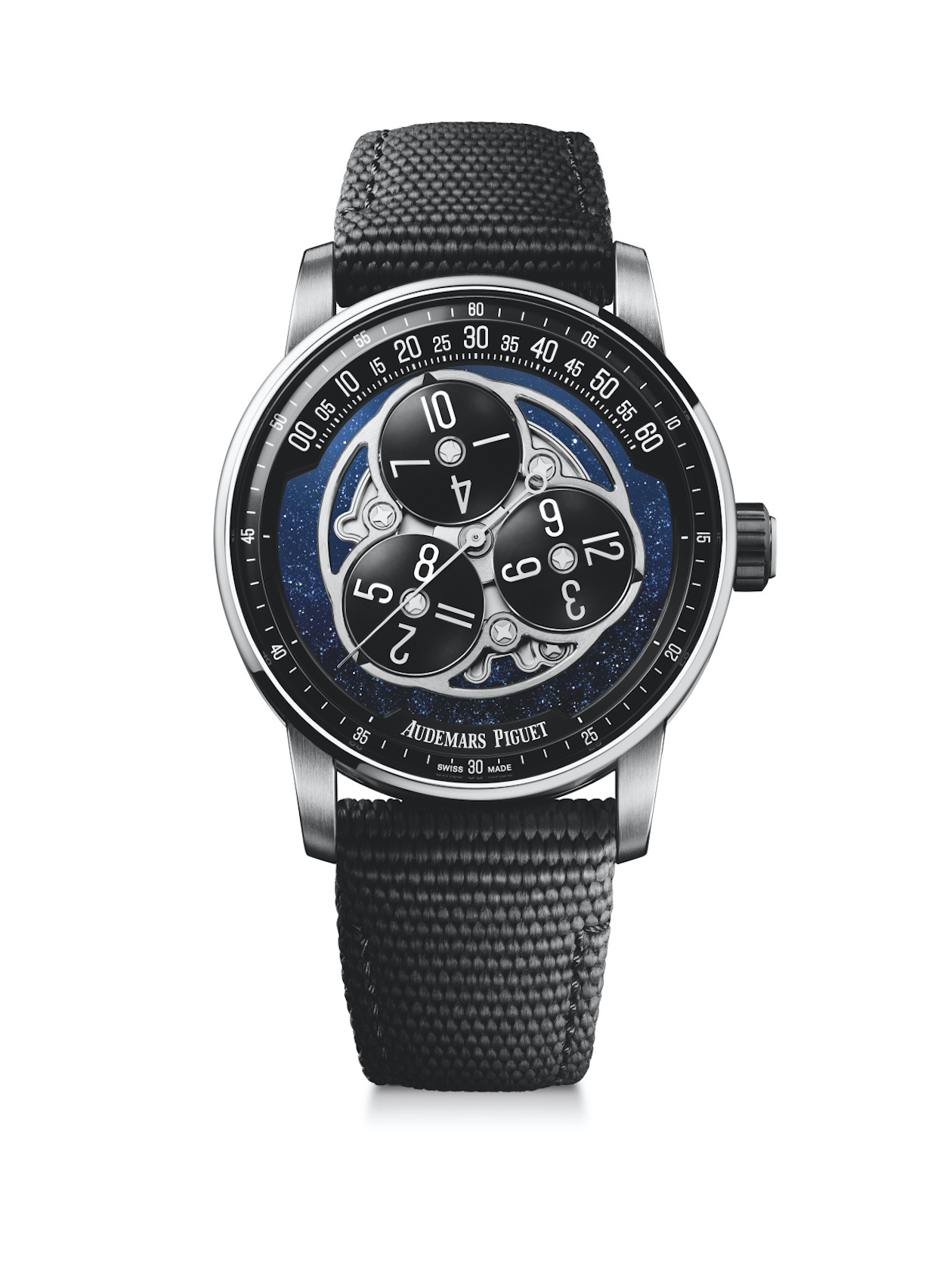
Audemars Piguet Code 11.59 Starwheel
By Nancy Olson
Audemars Piguet’s Code 11.59 watches caused quite a stir when they were first introduced to the world in 2019. There were mixed reviews of the watch, which boasted a big dial and barely any bezel. However, as Audemars Piguet began chocking the Code 11.59 with complications, the collection has caught the eye of many a collector. That is especially true with the recently unveiled Code 11.59 Starwheel complicated watch with wandering hours.
History of the Starwheel with Wandering Hours
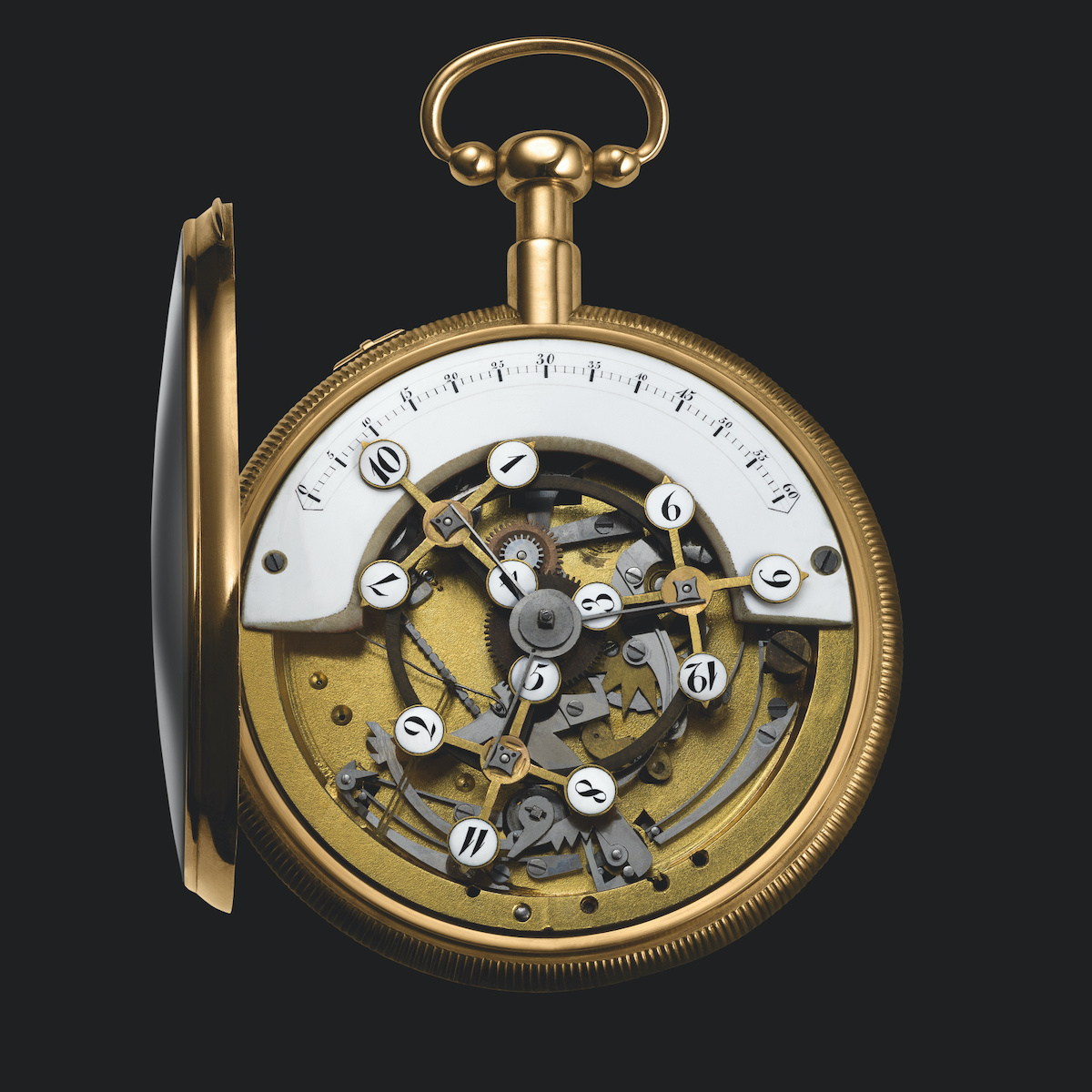
Heritage pocket watch with wandering hour complication
The wandering hours complication dates to the 17th century, designed anew by Audemars Piguet in its latest Code 11.59. According to lore, the mechanism was in answer to a special request made by the insomnia-plagued Pope Alexander VII, who wished for a silent (as in “no ticking”) timepiece that would also be easy to read in the dark. Thus, the first wandering hours clock, with its backlit arc-shaped scale that indicated the quarter hours, was born at the hands of the Italian clock-making brothers Campani, based in Rome. Various renditions were later introduced, with the popularity of the complication waxing and waning over the years.
In 1991, after months of development, Audemars Piguet reimagined the system and presented its first wandering hours watch. Named the Star Wheel—probably because of the three “stars” that supported the sapphire hour discs fixed on a large central wheel—it found success among a public eager for the intricacies of mechanical watchmaking. About 30 Star Wheel models were produced by the Le Brassus-based manufacture between 1991 and 2003, with the arc-shaped aperture present in different lengths and locations. Some of the watches also incorporated gem-setting and open-working.
Contemporary Code 11.59 Starwheel
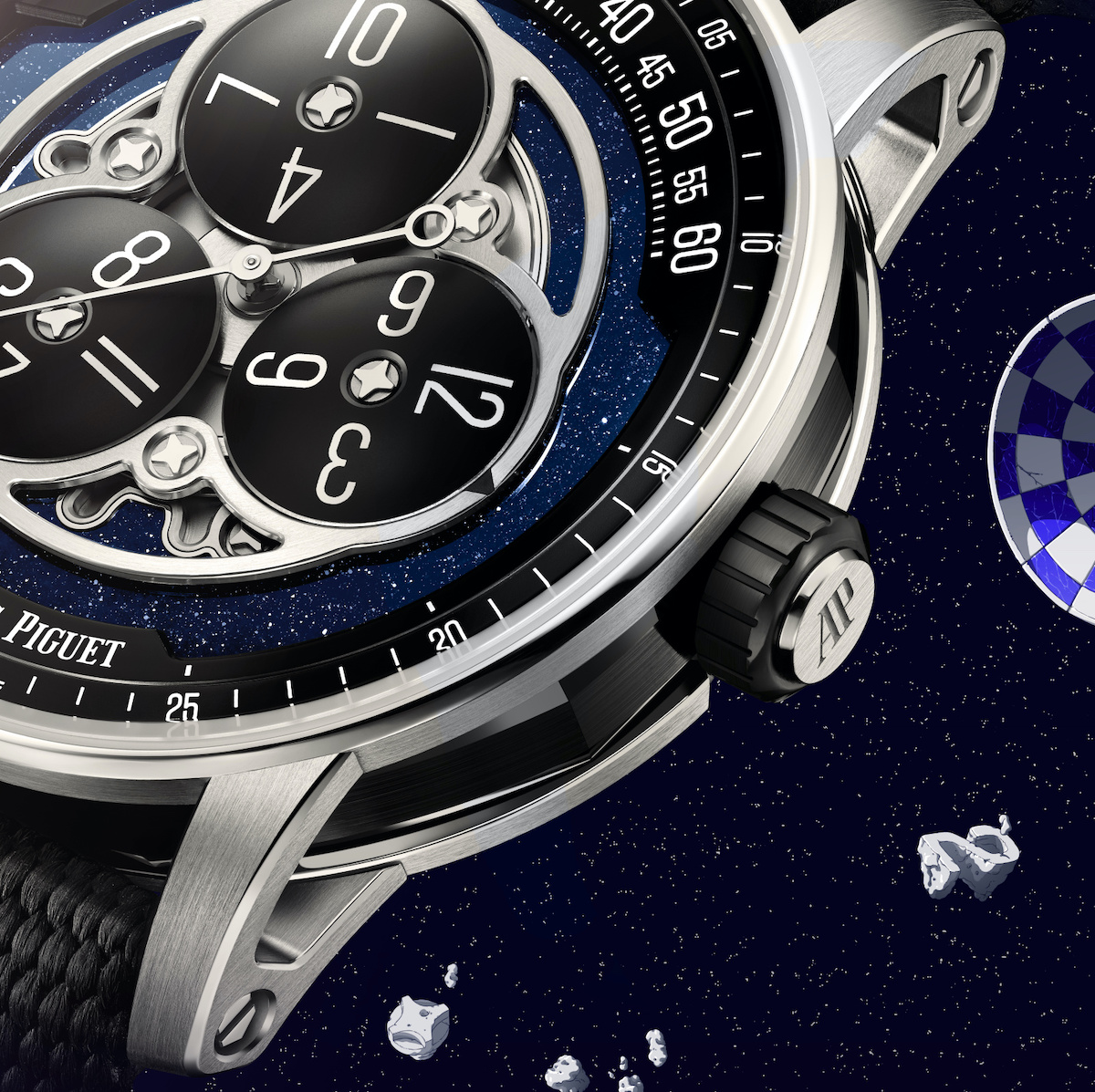
A close up look at the Audemars Piguet Code 11.59 Starwheel
In this newest model—Code 11.59 by Audemars Piguet Starwheel—the company is paying a contemporary tribute to this age-old complication, here fashioned from 18-karat white gold, black ceramic and blue aventurine, which serves as the backdrop for the three aluminum discs that rotate (wander) on their own axes. The self-winding Caliber 4310 drives the display and offers a minimum power reserve of 70 hours. This 261-part movement is derived from Caliber 4309, to which a new module has been added. It is 6.05mm thick and has a frequency of 4 Hz, or 28,800 vibrations/hour.
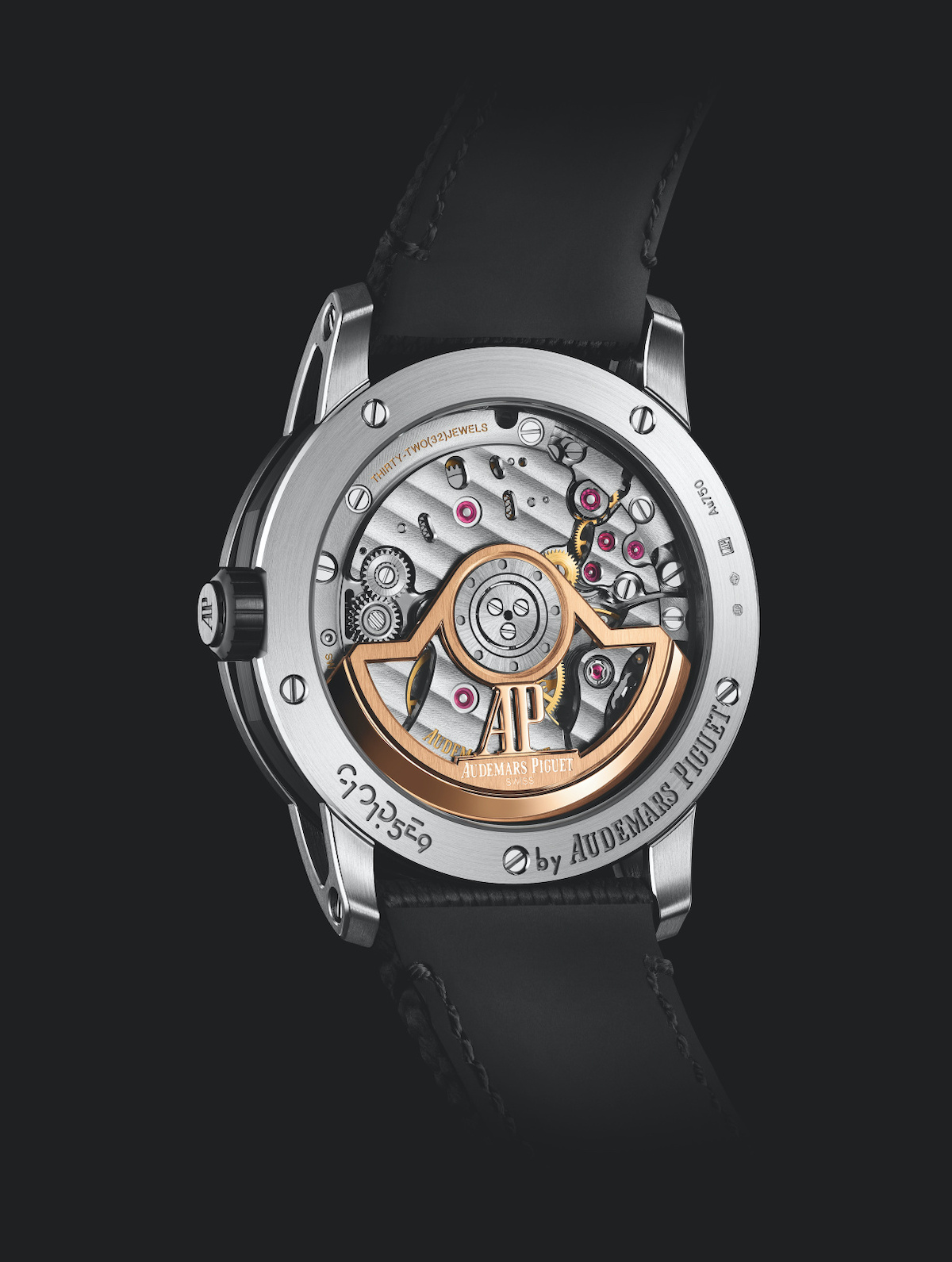
The back of the Audemars Piguet Code 11.59 Starwheel
The watch’s time-telling display is achieved via a central rotor on which the three aluminum discs are fixed; it makes a complete revolution in three hours. Each black PVD-treated slightly domed disc has four digits, from 1 to 12, that reference the arced sector at the top of the dial on which the minute scale is visible. The 18-karat white gold central seconds hand is slightly curved at its tip to follow the architecture of the three discs.
The 41mm watch is 10.7 mm thick and features a sapphire crystal caseback revealing the movement’s 22-karat skeletonized pink gold oscillating weight. The black ceramic case has an 18-karat white gold bezel, and white gold lugs and caseback.
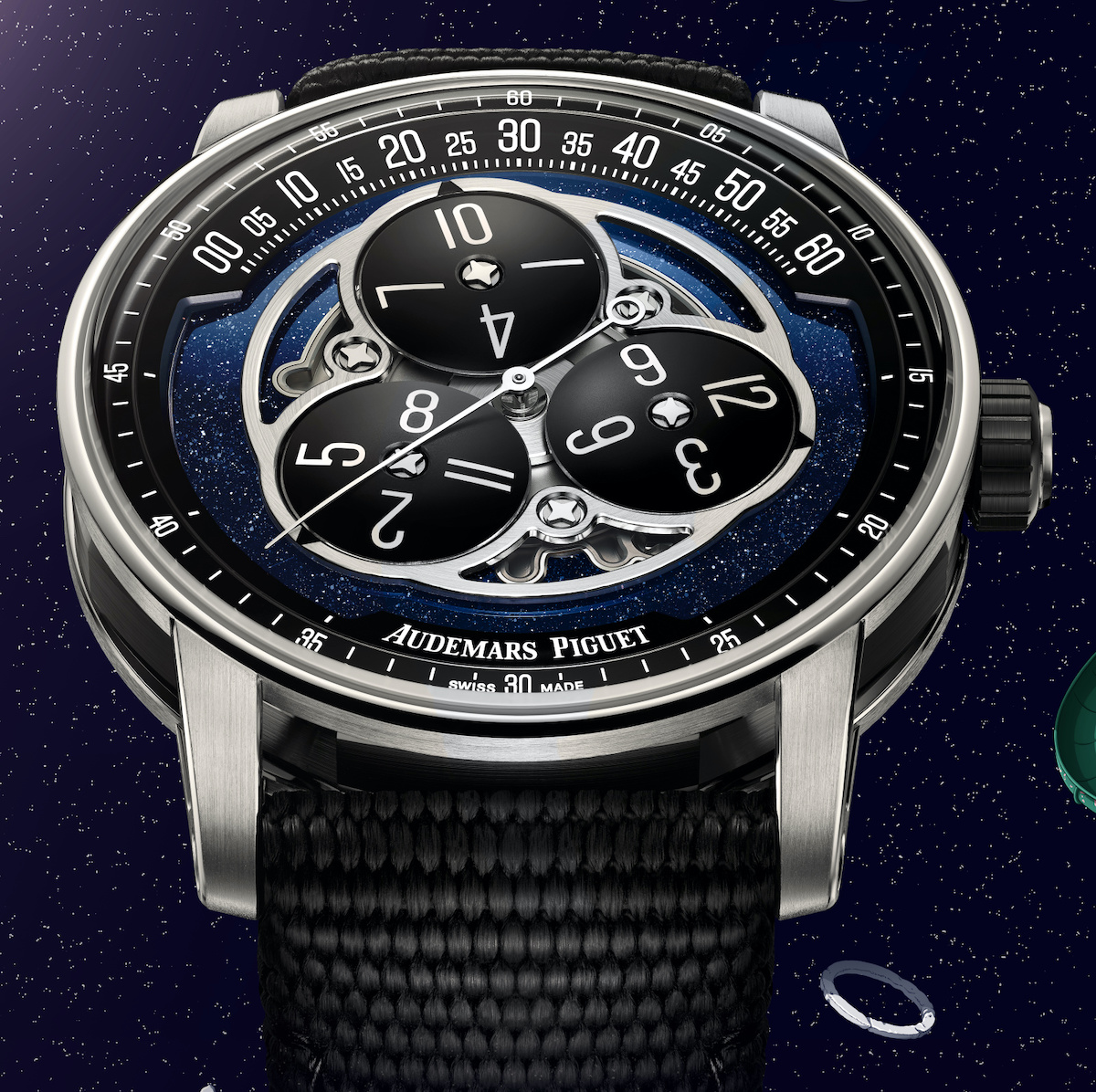
Audemars Piguet Code 11.59 Starwheel
The Code 11.59 by Audemars Piguet Starwheel—water resistant to 30 meters—is fitted on a contemporary-looking textured rubber-coated strap with an 18-karat white gold pin buckle. The watch is priced at $57,900.





